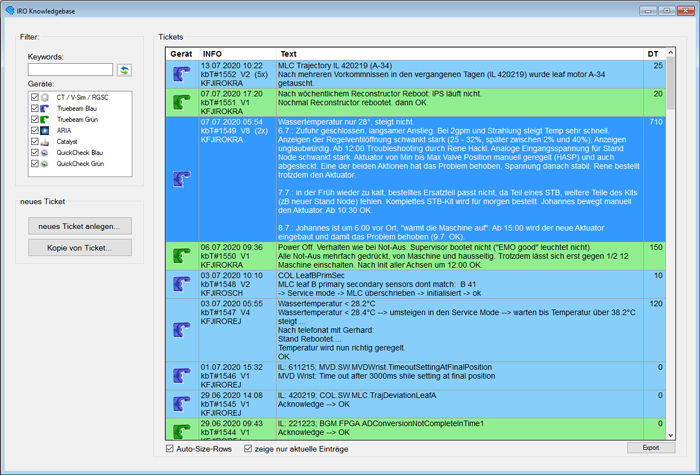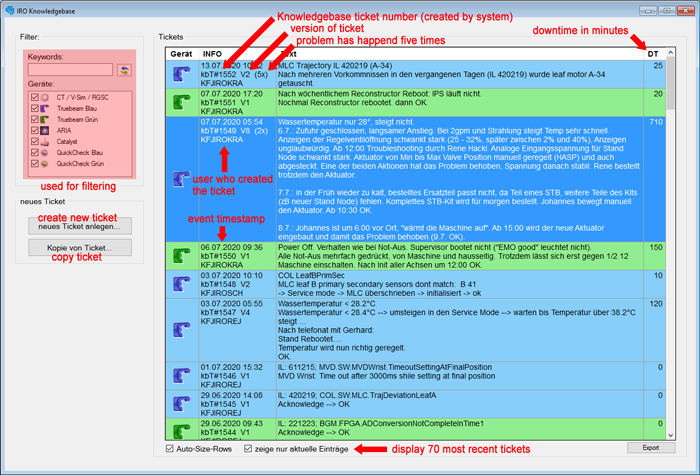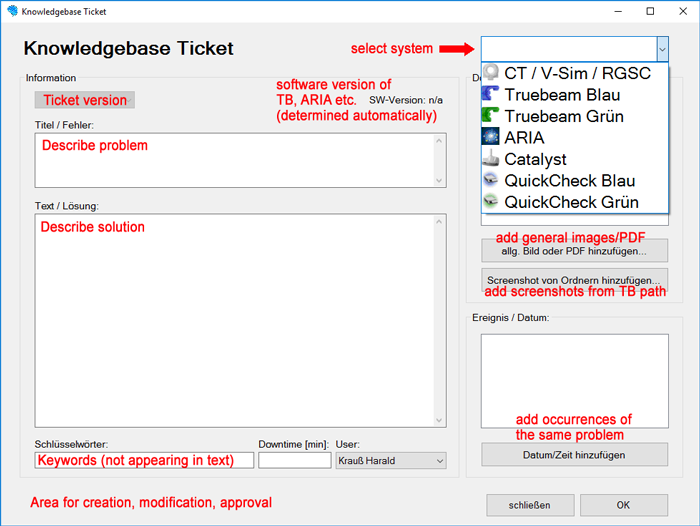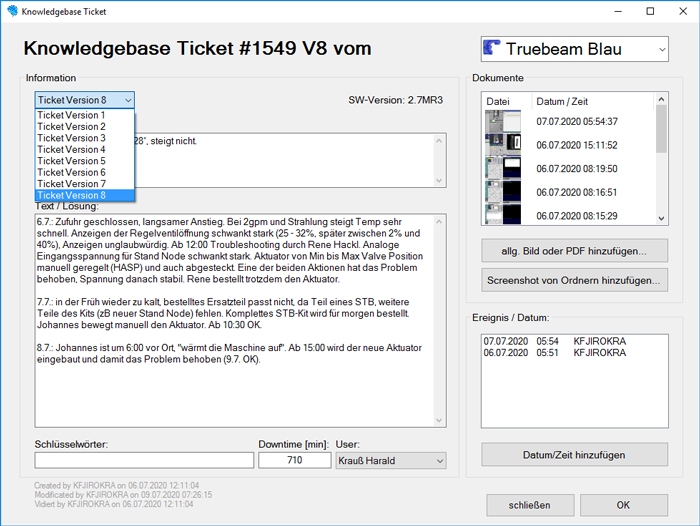Introducing Knowledgebase
Knowledgebase is our digital log for the documentation of technical problems on our TrueBeams, the CT, ARIA, and other systems. It is approved by our supervisory authority.
History
According to official regulations, certain devices like linacs, x-ray devices etc. may only be operated if a logbook exists where events concerning the technical safety are documented1. If the logbook is a real physical "book", pages must be numbered to prevent data manipulation. At our institute, such books were used for many years:
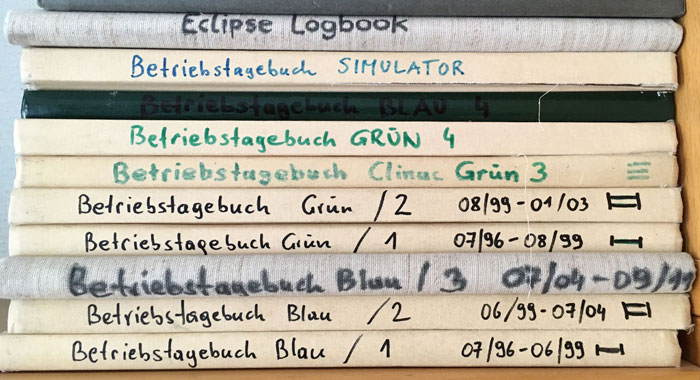
(Old logbooks from Clinacs, Ximatron and Eclipse.)
Physical logs have several disadvantages: They only exist in a single copy. Searching for keywords is not possible. Screenshots have to be printed first before they can be tacked/taped/glued to the pages, which often didn't look nice.
If data manipulation can be prevented, digital solutions provide equal or better data security, accessibility and have some more advantages.
We started Knowledgebase three years ago. After getting approval by the ministry of health three months later, we stopped using physical logbooks.
Inside Knowledgebase
Knowledgebase was programmed in Microsoft .NET and uses a free MS-SQL database. It is accessed via the iCheck main screen:
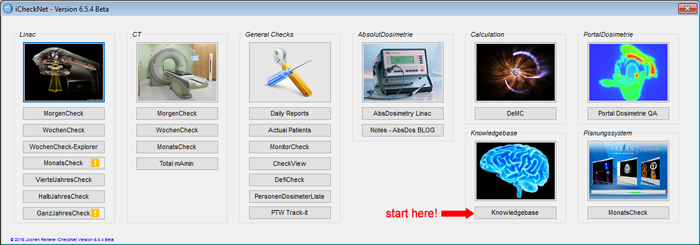
(iCheckNet version 6.5.4 Beta.)
The GUI is in German because we only use Knowledgebase internally, but we think that non-German readers will get the idea.
Let's create a new ticket. First, the system which has the problem has to be selected from the drop-down list:
Originally, the list only consisted of the TrueBeams, the CT (including RGSC), and ARIA (including Eclipse) - see examples. Then we felt the need to document the problems with our surface scanners (CatalystHD). The most recent additions were the two QuickCheck devices.
On the TrueBeams, system screenshots from the console and the imaging screen can be captured by pressing "Print Screen" on the keyboard. These images are saved to the so called I-drive. Knowledgebase accesses this dedicated path when we want to attach screenshots from the linac to illustrate our ticket:
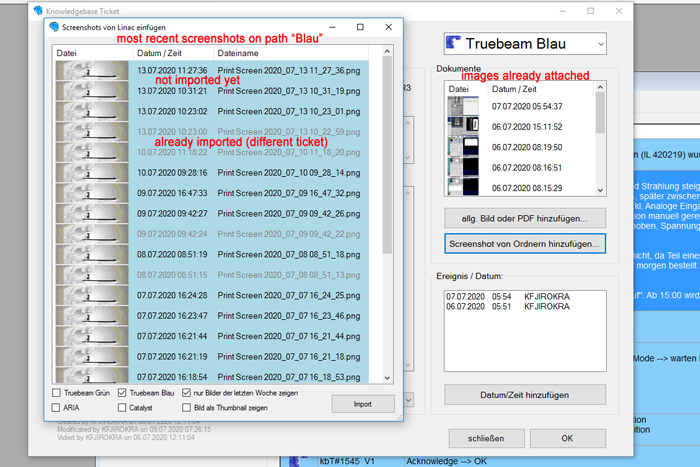
(Attaching new images to the ticket. The listing is from the PrintScreen directory on the I-drive.)
The screenshot file names are as created by the TrueBeam. They are printed in grey if already imported (attached to a ticket). Only an icon is displayed in the first column. By double-clicking, the full screenshot is displayed.
Tickets cannot be deleted, only new versions can be created. Changing a single character in the text (e.g. a typo) will create a new version automatically.
A complicated problem which cannot be solved immediately may undergo several revisions. In the following example, the ticket was modified seven times2:
The cooling problem stretched over two days (On the third day, the service engineer was on site early in order to "warm up" the machine with HASP rights). But this does not mean that the machine was "down" for two days. The true downtime always has to be tracked manually (When did we start to treat patients?). There is no way to automate the downtime calculation.
All entered text can be searched for3:
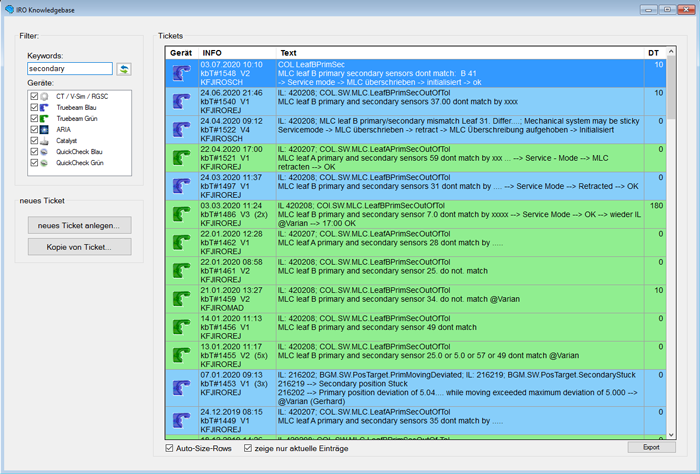
(Searching for the keyword "secondary").
While Knowledgebase is typically used by physicists and our system administrator (the users with administrator rights), it is also possible for therapists, nurses, doctors or external personnel (e.g. service engineers) to read and create tickets. These new tickets are highlighted until they are approved by a user with administrator rights.
Notes
1 The primary focus of these regulations is radiation safety, but since such events are extremely unlikely with modern machines, the book is mainly used to log technical problems.
2In version one, we were still barking up the wrong tree, erroneously suspecting the stand node.
3 The Keywords field behaves like a third text field, which is usually left empty. The partitioning into three text fields ("problem", "solution", keywords") is to offer a certain structure, but it could as well be a single large text field.
